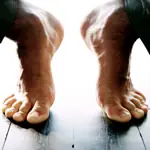 Groin injuries are a common athletic injury in both contact and non-contact sports. Injuries to the groin can occur from direct trauma in sports such ice hockey, basketball, football, rugby, and in non-contact sports such as gymnastics. In hockey, 10% of the injuries that occur each year are groin injuries. These injuries should be taken seriously because, once an athlete injures their groin, they are twice as likely as other players to incur the same injury again.
Groin injuries are a common athletic injury in both contact and non-contact sports. Injuries to the groin can occur from direct trauma in sports such ice hockey, basketball, football, rugby, and in non-contact sports such as gymnastics. In hockey, 10% of the injuries that occur each year are groin injuries. These injuries should be taken seriously because, once an athlete injures their groin, they are twice as likely as other players to incur the same injury again.
Anatomically your groin is the area where your upper thigh meets your pelvis (lower abdomen), essentially the crease or fold between these two areas. In reality, groin injuries involve a much larger area than just this. A groin injury can encompass an area that extends from your lower abdomen, to your pelvis, to your hip and inner thigh, and right down to your knee.
Since a groin injury can cover such a large anatomical region it can involve muscles, tendons, ligaments, joints, connective tissue (fascia), neurological, circulatory structures and even internal organs in the lower abdomen. In this blog we will limit our focus to musculoskeletal causes, except for a quick review on some conditions that must be ruled out (See differential diagnosis).
Differential Diagnosis
A differential diagnosis refers to the process of determining the probability of one condition over another. It is the process of making sure we are actually dealing with a musculoskeletal condition and not something more serious (pathological).
Fortunately most groin injuries are musculoskeletal injuries (mechanical problems) that will respond well to manual therapy and exercise. However, it is still important to evaluate other causes of groin pain (pathological causes) rather than assuming the problem is just a simple muscle strain. Some of the other problems that must be considered are:
· A hernia is a condition that must be ruled out whenever a groin injury presents itself. Minor hernias do respond to rest, ice, and range of motion exercises. More severe hernias require surgery (mesh reinforcement).
· The hip contains approximately eighteen superficial and deep bursae. Bursae are small pouches with slippery surfaces that reduce friction between two moving surfaces (increase gliding). The bursae are usually located in areas where muscles and tendons glide over bones. When the bursa becomes inflamed it loses the ability to decrease the friction between the moving surfaces. As inflammation increases, instead of providing ease of movement, they become a source of friction and pain. Chronic bursitis can be due to an underlying inflammatory condition. Examples of common sites of hip pain due to a bursa are the:
· Directly over the greater trochanter
Fractures (Frank or Stress fractures)
· If the initial groin injury has been caused by trauma (in a contact sport) then possible fractures must be considered. The two most common sites for stress fractures are in the upper leg (femoral neck) and in the pelvis (pubic ramis). A simple X-ray is often all that is needed.
· An avulsion often refers to a bone injury where the tendon (which attaches muscle to bone) is torn away from its insertion point. Some of the possible sites of avulsions in a groin injury are:
§ ASIS (anterior superior iliac spine) – The site of the sartorius muscle attachment.
§ AIIS (anterior inferior iliac spine) – This is the site where the middle quadriceps (rectus femoris) attaches.
§ Ischial tuberosity – This is the site of attachment for your hamstrings.
· This condition is also known as gracilis syndrome. It is a repetitive stress injury that affects the pubic symphysis. This is an injury that can occur in runners, or sports that involve jumping or kicking. Osteitis Pubis can be increased after childbirth due to ligamentous laxity.
Nerve Compression
· Nerve compression can be a common problem associated with a groin injury. An example would be compression of a nerve called the femoral cutaneous nerve. When this nerve is compressed it creates a condition called Meralgia Paresthetica. This condition creates alter sensations on the outside of the hip.
In part two of Resolving Groin Injuries we will cover diagnosing a musculoskeletal groin Injury, including specific structures involved.
If you would like to more information or to purchase our books please go to www.releaseyourbody.com .
If you would like information about our clinic in Calgary Alberta please go to www.kinetichealth.ca.



